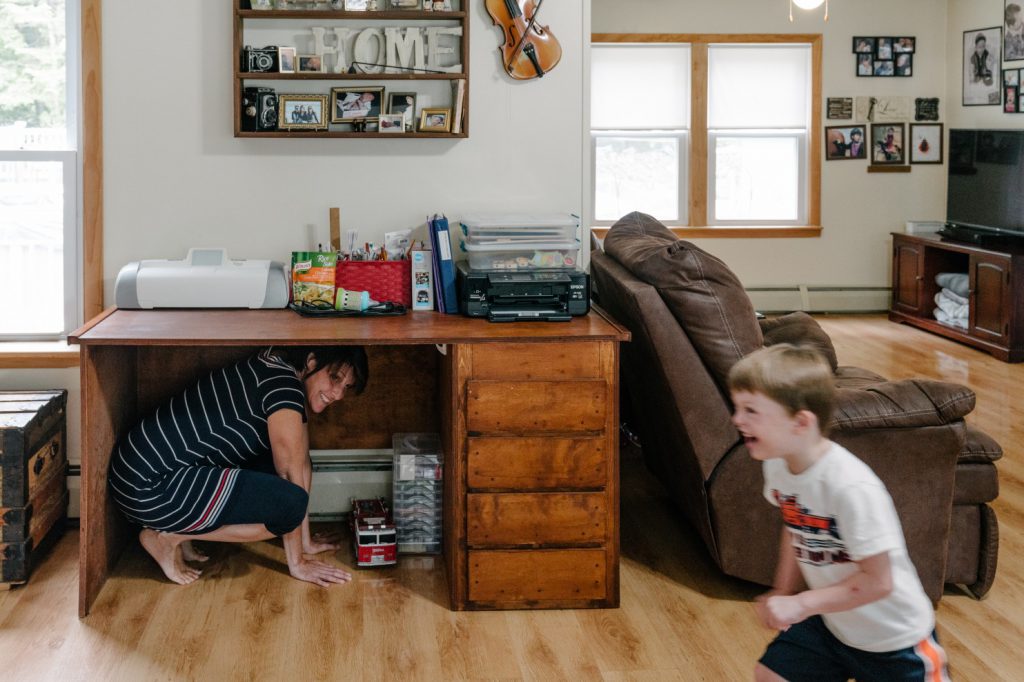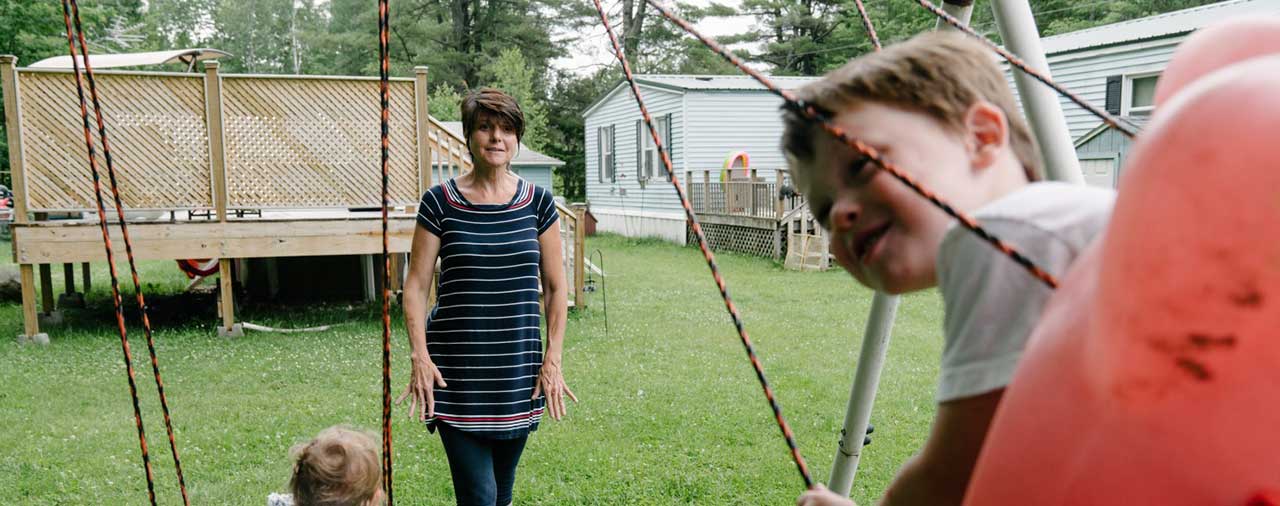The impact of the opioid crisis on the foster care system.
by Perry Stein and Lindsey Bever of The Washington Post
It’s heartbreaking to watch a baby go through withdrawal, and then give that baby back to Mom.Deb McLaughlin
GREENBUSH, MAINE — Deb McLaughlin’s 3-year-old grandson climbed all over her, pleading to play trucks, restless as always. Her 1-year-old foster daughter, who had just woken from a midday nap, sat in her lap, wearing a frilly dress and an irresistible smile. At least McLaughlin doesn’t have to worry about the daily shots of methadone anymore, at least these babies no longer scream and shake for the opioids to which they were born addicted.
This isn’t what McLaughlin envisioned for her empty nest years in rural Maine, trading camping and four-wheeling trips for social-worker check-ins, meetings with behavioral therapists and supervised visits with the drug-addicted biological parents who had to give up these children. McLaughlin’s daughter, who once dreamed of being a lawyer, is one of the millions of Americans addicted to opioids and one of thousands of parents whom state governments have deemed unfit to care for their own children.
“It’s heartbreaking to watch a baby go through withdrawal, and then give that baby back to Mom,” McLaughin said as she prepared snacks in her blue mobile home outside Old Town, along the Penobscot River. “Because she did that to her.”
The impact of the opioid crisis on the foster care system.
More than 1,000 children are born addicted to drugs in Maine each year, many of whom end up in foster care. The two children in McLaughlin’s home were among the more than 1,800 in foster care across the state in 2016, a nearly 45 percent increase in foster children here since 2011.
The trend in Maine is echoed in foster-care systems throughout the country, especially in rural areas that have been hit hard by addiction. Many are becoming overwhelmed as the opioid crisis has forced more and more children into state custody.
[Drug crisis is pushing up death rates for almost all groups of Americans]
Massachusetts experienced a 19 percent increase in children in foster care between 2011 and 2015. Ohio’s foster population has gone up nearly 10 percent, with more than 60 percent of children in the system because of parental drug abuse. The number of North Dakota children in need of foster care has gone up more than 27 percent.
Foster-care experts say that as the drug epidemic has intensified during the past two years, another rush of children has entered the system. State budgets are stretched, social workers are overloaded, and not enough families are willing to provide children with temporary homes.
The impact of the opioid crisis on the foster care system.
American foster care, experts say, is in crisis.
“It’s pretty much every state — except maybe four or five — that have seen an increase in the number of children in foster care,” said John Sciamanna, vice president of public policy at the Child Welfare League of America. “What you are seeing now is just a straining of the system.”

The widespread and growing abuse of opioids and methamphetamines has played a significant role in reversing what had been a positive trend in the number of children needing foster homes. At its modern low point in 2012, 397,000 U.S. children were in foster care, according to data from the U.S. Department of Health and Human Services. By 2015, that number had risen 8 percent, to 428,000, and experts say the past two years — the height of the opioid epidemic — has increased that number dramatically, although concrete data is not yet available.
[In just one year, nearly 1.3 million Americans needed hospital care for opioid-related issues]
The progress in the early 2000s was linked to the implementation of laws meant to prevent children from languishing in foster care and providing financial subsidies as incentives to adopt, Sciamanna said, including President Bill Clinton’s signing of the Adoption and Safe Families Act in 1999.
But as the increase in drug abuse affects many layers of society, it also is complicating the typical pathways to adoption. When children come from a violent home, for example, it’s a relatively straightforward decision about whether to permanently terminate a parent’s right to care for them. With drug addiction, which can be a hidden issue and can involve treatment, recovery and relapse, the decision to take a parent’s children away can be difficult and take a very long time.
“You begin to look at all these various impacts across multiple systems, but I would say the child welfare system is really the canary in the coal mine of a growing crisis that’s not going to go away anytime soon,” said Wendy Ellis, a public health expert at George Washington University.
The impact of the opioid crisis on the foster care system.
Danylle Carson, a lawyer who represents children in foster care and who grew up in Maine state custody herself, said the ultimate goal is to reunite foster children with their biological parents. But that is often a lofty — and unattainable — goal.

